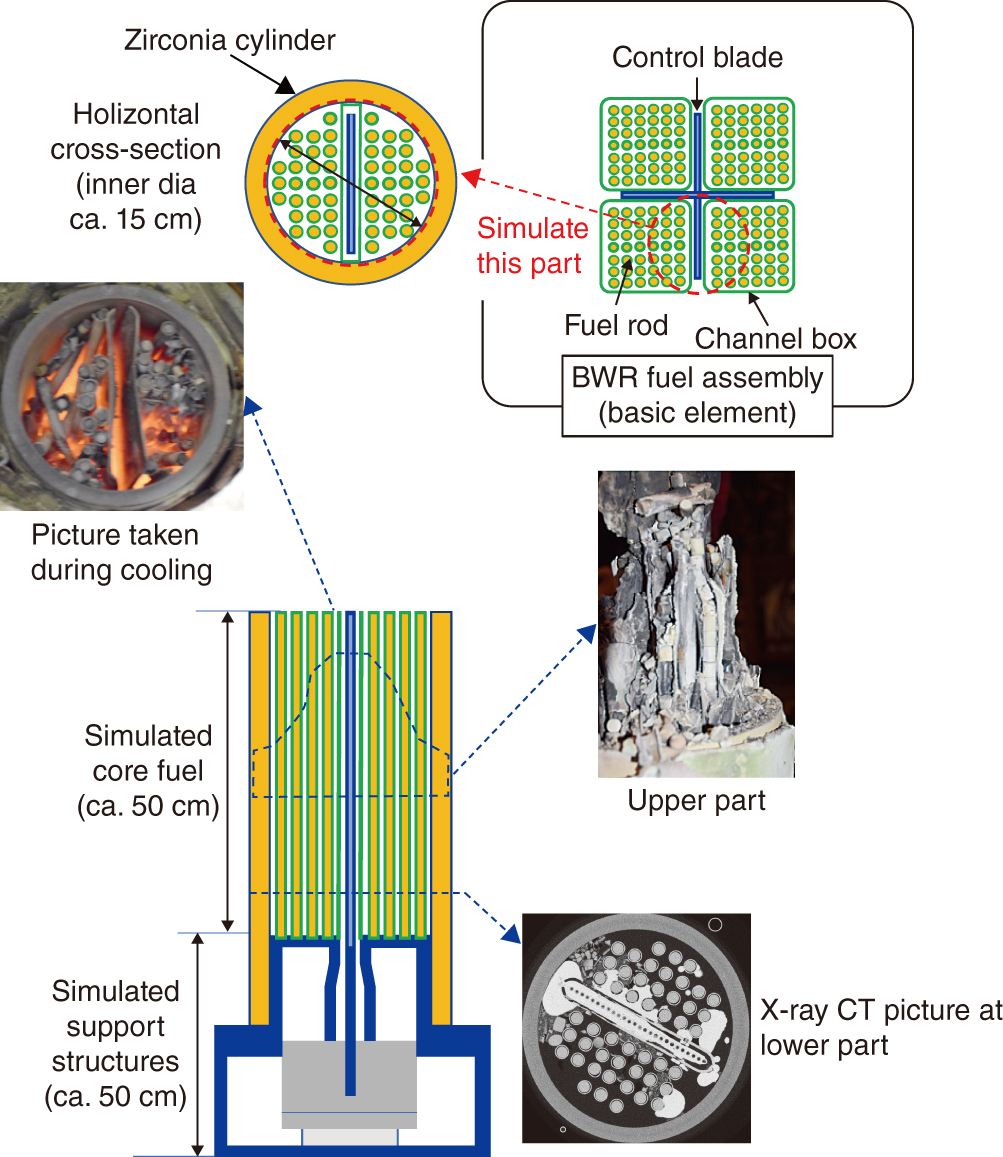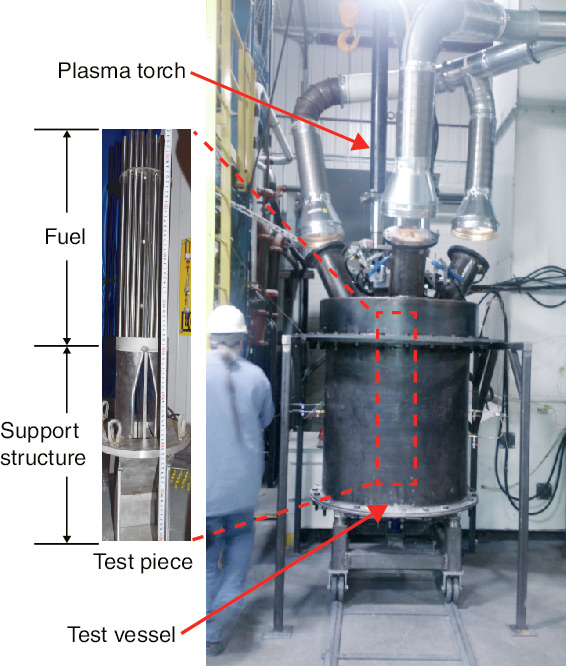
Fig.1-2 Example of a plasma-heating-test piece and observation after heating

Fig.1-3 Plasma-heating-test apparatus
We are studying core-melting and relocation behavior under severe-accidental conditions in boiling-water reactors for a better understanding of accident progression and the present core status of the TEPCO’s Fukushima Daiichi NPS (1F).
BWRs such as 1F have cross-shaped control blades comprising boron carbide (B4C) and stainless steel (SS) surrounded by four fuel assemblies (Fig.1-2). B4C and SS can form eutectics, allowing melting and relocation starting at around 1200 ℃. After this relocation, the remaining fuel columns may collapse and relocate down to the fuel bottom through the possibly voided space provided by relocation of control-blade materials. Such BWR-specific core-degradation and relocation behavior is simulated by plasma-heating technology. The test piece as presented in Fig.1-3 uses zirconia (ZrO2) pellets to simulate real UO2 fuel, while all other materials are basically the same as actually used in BWRs. The test piece, made of a 50-cm-high fuel part and a 50-cm-high support-structure part, is heated at the top so that the large axial temperature gradient thought to have existed in the 1F accident (ca. 2000 K/m) could be realized. As is shown in Fig.1-2, the control blade is lost in the upper region, but fuel columns remain. X-ray CT reveals that such relocated material fills the space between the control blade and the channel box or between fuel rods in the lower part. The test piece after heating comprises ceramics, including boron, and is quite hard; a water jet is used to cut this piece. Precise material tests such as analyses with x-rays and chemical methods are underway.
We are presently conducting this test program as a member of the International Research Institute for Nuclear Decommissioning (IRID), with financial support from the Ministry of Economy, Trade and Industry, Japan (METI) subsidy for the Project of Decommissioning and Contaminated Water Management. The outcomes will also be reflected in evaluation of BWR-core-melting and relocation behavior and improvement of evaluation technology.
<Previous: 1 Research and Development Related to the Accident at TEPCO’s Fukushima Daiichi NPS | Next: 1-2>